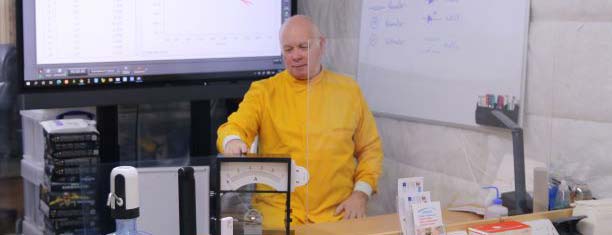Thursday 28 May 2020
Measuring Gravity by Free fall
Some
of my equipment is very expensive and dedicated to only one job or experiment
.Lego EV3 on the other hand can be used with some ingenuity to create many
different types of equipment, to record all types of events. Here we are
measuring Gravity by free fall and creating this out of Lego can achieve some
remarkable results. The time for the drop of 50cm has just over 0.32 of a
second giving an estimate of gravity at 9.76 m/s/s. With a bit of programming
this is a very decent result and remarkably consistent as well.
Monday 25 May 2020
Diy Ripple Tank
A
quick and simple way of creating you own ripple tank using a plastic lid, a
couple of books and a light. Watch the video. https://www.youtube.com/watch?v=9l-tIvvtCPA
Sunday 17 May 2020
A Level Maths Teaching.
As well as covering the sciences, we also cover Maths at
both GCSE and A Level. Many of our students struggle with some of the harder
concepts such as Trig Equations and solving them. This weeks A level Maths
lesson dealt with this problem showing approaches to solving these problems
without resorting to the answers or begin told this is the way to do this one.
Students need to learn these techniques so that they can become better
Wednesday 13 May 2020
Glycolysis A level Biology
In
today's A level Biology Video we looked at Glycolysis, the Link reaction, The
Krebs cycle and Oxidative Phosphorylation. The process of Glycolysis breaks
down glucose into 2 3 carbon sugars only producing a small amount of energy.
The link reaction does a little more, but the Krebs cycle makes the most energy
and this is in all forms of energy chemicals. These are all turned into ATP the
energy molecules by the process of oxidative phosphorylation.
Sunday 10 May 2020
Transpiration and the Potometer
Looking
at how plants take up water is an essential experiment in Biology. A small piece of plant in this case some water cress is inserted into a tube at the top making a water tight seal. The
potometer shown here allows an air bubble to be brought into the apparatus, using a syringe, so
that the movement of the bubble can be monitored with time. As the plant transpires, water is sucked up the tube and evaporates from the leaves. By knowing the
volume of the capillary tube the amount of water lost be minute can be
calculated.
Sunday 3 May 2020
Carbon Nanotubes
Three
allotropes of Carbon, Diamond, Graphite and Buckminster Fullerene are known.
There is another, a one slice of graphite (graphene) that is rolled into a tube to make a carbon nanotube called a carbon fibre.
This model was created by me since a manufactured model didn't exist. I made a sheet of graphene three carbons joined to each other then rolled it up like the real thing. The tube is incredibly strong .
There is another, a one slice of graphite (graphene) that is rolled into a tube to make a carbon nanotube called a carbon fibre.
This model was created by me since a manufactured model didn't exist. I made a sheet of graphene three carbons joined to each other then rolled it up like the real thing. The tube is incredibly strong .
Subscribe to:
Posts (Atom)
Electricity Revision
The challenge: Revise all the electricity Topic in 1 hour and carry out 3 required practicals. Easy with the @pascoscientific voltage/curr...

-
Negative feedback is a difficult concept to try and get over so I tried using a balance board and the @pascoscientific smart cart strapped...
-
Getting a classic set of results for the titration of NaOH and HCl is not that difficult but it is nice when we can get students to this ...
-
Mechanics: the grand meeting of Maths & Physics! Using strobe light & a ball drop for gravity-acceleration calculations and SUVAT fo...











